- All-new exotic sports car
- Turbocharged V6 and plug-in hybrid system combine to make 671 hp
- 0-60 mph in just 3 seconds, McLaren says
- New touchscreen interface
- 2022 model kicks off the first year for the Artura
Driven: 2022 McLaren Artura Is Crazy Fast, and Sips Fuel
Up to 19 miles of EV range. That's the big headline here, right?
What is the Artura?
McLaren is no stranger to blistering-fast plug-in hybrid vehicles. Its P1 supercar from the mid-2010s joined the Ferrari LaFerrari and Porsche 918 Spyder of the time as limited-edition hypercars. Now the company has another one: the 2022 McLaren Artura. But this time the price is only a fraction of the P1's.
The Artura is recognizably a McLaren, with its curvy lines, inset headlights, side intakes, slim taillights and high-mounted exhaust outlets. But the lines are more crisp and the proportions lower and more bullish. Thanks to weight savings from carbon fiber and aluminum construction, McLaren says, the Artura checks in at around 3,300 pounds. That's pretty impressive, hybrid vehicle or not.
The Artura joins McLaren's V8-powered 720S and 765LT as part of its "Supercars" lineup. It is a subtly different sort of car. Stealthier, less angry.
Ferrari has just launched a hybrid V6 car of its own, the 296 GTB. That has nearly 150 horsepower more and a higher price, so the McLaren has a distinct place in the market. For both Ferrari and McLaren, hybrid isn't just about better fuel consumption or the ability to slip quietly through residential neighborhoods — valuable though both those things are. The hybrid tech is also about improving performance and powertrain responsiveness.
What's under the Artura's hood?
The mid-engine Artura is primarily driven by McLaren's first V6: a twin-turbo unit that produces 577 horsepower and 431 lb-ft of torque on its own, and revs to 8,500 rpm happily. The plug-in hybrid component consists of a lightweight 94-hp electric motor that's integrated into the transmission and fed by a battery pack with 7.4 kWh of capacity. Combined output is 671 hp and 531 lb-ft, and that gets sent to the rear wheels through a new eight-speed dual-clutch transmission.
McLaren designed the car's hybrid system so that the engine recharges the battery during phases of light throttle and braking. Incidentally, that's the only method of energy recovery. The brake pedal does just that: operates the carbon-ceramic disc brakes. It's not a typical hybrid system that uses blended regenerative braking because McLaren wanted a consistent pedal feel.
The battery can be charged from zero to 80% in two and a half hours. Fully charged, the Artura will provide around 19 miles of all-electric range if you're gentle with the driving. (As of our article's publication, the EPA has not provided its range estimate or official city/highway mpg estimates.)
Also of note: The all-new eight-speed has no reverse gear. The car backs up by reverse torque from the electric motor. Integral with the transmission is an electronically controlled variable-locking differential to help put the power down. Past McLaren cars had relied on braking individual wheels to prevent the inside wheel from spinning.
How's the Artura's acceleration?
Power delivery is strong and remarkably consistent. You don't feel the actions of the turbos or electric motor. It's simply a progressive rush. Imagine a naturally aspirated engine of at least twice the size. But one that can spin to 8,500 rpm.
The factory claims go like this: Zero-to-60 time is 3 seconds flat, on European testing methods, no rollout. Standing quarter is 10.7 seconds. Top speed is 205 mph, electronically limited.
A funny thing about the performance, though. Because there's little lag, and you've got generous torque all the way from 2,000 rpm, there is no sense of a turbo hurricane blowing in, or of an engine revving up to its sweet spot of power delivery. You got those with the McLaren V8-powered cars. The Artura is, by contrast, so evenhanded it almost disguises its own strength. But the numbers sure rack up on the speedo.
By the same token the engine noise is comparatively undramatic. It's a smooth, deep-chested growl that varies in pitch as the revs rise, but not much in character. It's tuneful, but it's not the full multi-instrument band played by some other supercars.
What about the Artura's steering, handling and braking?
One of the Artura's undoubted high points is the steering. The company retained a hydraulically assisted system because it offers more feel of the tires. We agree. A light nose weight also allows more feel because the level of assistance needed is less.
So your hands can read the road like your fingertips are down there. The dips and crests, the nature of the surface itself, and most of all the proportion of available tire grip that you have used: All that info and sensation is fed back in abundance. It makes the car super-engaging even at normal road speeds and imparts huge confidence when you're at max track-speed effort.
The handling balance is neutral, with a proportional ability to rotate into a bend with a lift of the throttle. It's not snappy. Traction is strong and you can select multiple levels of traction control, with increasingly lurid doses of oversteer. But again, it's comparatively controllable rather than knife-edge.
The Artura's standard-fit carbon-ceramic brake discs are clamped by six-piston monobloc calipers at the front and four-piston at the rear. The resulting stopping power is immense, while the rear suspension geometry keeps the car reassuringly stable. That said, the pedal isn't all that sharp at the beginning of its travel. That makes it easy to be smooth at urban speed, but some extra initial bite would make things feel more vivid in quick driving.
The Artura doesn't have McLaren's clever hydraulically cross-linked roll-control system, relying instead on conventional stabilizer bars. But it does have adaptive damping. Suspension control is just terrific at all times, and as with the powertrain you can cycle between damper modes: Comfort, Sport and Track.
In electric mode, by the way, accelerating from 0 up to about 30 mph is quite brisk, but beyond that it gets pretty sluggish as the motor can only sustain peak power for a few seconds. To drive on rural roads or highways on pure electric would be a waste of battery. Save it for when you're in town.
How comfortable is the Artura?
You do have to duck a little to get in, but it's no great contortion. Swing the scissor door forward and upward, drop into the seat and your legs follow. The angle of the doors' opening means you can get in and out even if another vehicle is parked nearby. And even when at full height, the doors are less tall than a full-size SUV's so they won't strike the roof of a parking garage.
The seats are low and the driving position ideal. Two types of seat are available — an electric multi-way comfort seat and a lightweight one-piece Clubsport seat, which cleverly adjusts in height and tilt. It's the one we tested, and we never felt discomfort. It supports you well on track too. The instrument screen moves together with the wheel.
Ride control is surprisingly supple, so major body movements over big bumps are quelled. It's also remarkable the way the suspension deals with small bumps and rough road textures, too. And there's not too much tire noise and very little wind roar at big speed. So this is a relaxing car over a long distance, and it's amenable to boring commutes. Another bonus: For a mid-engine car, the visibility is quite good over the shoulder, and the sloped nose and thin windshield pillars give a panoramic view forward.
How's the Artura's interior?
The design is minimalist and sleek but not stripped-out. Surfaces are upholstered and have ambient lighting of menu-selected color. The trim quality generally looks worth the car's price, and many of the hard surfaces are genuine aluminum or optional carbon fiber. Cloth and leather finishes and colors allow huge customization.
Switchgear ergonomics work well. The driving modes — one for the damping and one for the powertrain — are on either side of the instrument binnacle, a finger's reach from the steering wheel. In their centers are, respectively, a button to quell or defeat the electronic stability control and one to toggle between manual or auto gear shifting.
Four stalks sprout from the steering column. They operate indicators, wipers, the radar cruise control, and the trip computer and screen readouts. Smaller but easily accessible switches take care of functions such as nose lift and the lane departure warning.
How's the Artura's tech?
For entertainment, the Artura features an 8-inch vertically oriented touchscreen. Since the interface houses almost all the McLaren's controls, we're happy to report it's easy to use. The native apps include McLaren's own mapping, plus lots of car configuration menus, radio and media player, Bluetooth phone, and more esoteric items such as the variable drift control. Hit the home button on the screen's side and you see a menu of all these — hit it again and you see a simpler menu of just your favorites.
Apple CarPlay and Android Auto are loaded onto the infotainment system, and they work well in a vertical orientation, which puts maps above the other tiles.
A five-speaker audio system is standard, with a 12-speaker Bowers & Wilkins setup optional. That uses a subwoofer built directly into the carbon tub. Which is an excellent idea for two reasons. First, door trim-mounted speakers always excite the whole panel to vibrate, muddying the sound. The B&W system here has a terrific clean bass. Second, absent speakers, the door storage has been moved conveniently forward, and the contents don't fall out when the door swings up.
Another option is a track telemetry timer. If you want to spend even more time reliving your hottest lap or biggest near-miss, you augment it with a set of built-in cameras
Exotic sports cars aren't generally known for packing an array of driving aids, but the Artura bucks the trend with a moderate suite of features. The Technology package includes such conveniences as adaptive cruise control, which also works in stop-and-go traffic, lane departure warning, road-sign recognition, full adaptive LED headlights and parking sensors.
How's the Artura's storage?
The front trunk is average for a mid-engine car. No more than that. And unlike many of them, there is no space for, say, golf bags behind the seats. That room is taken up by the hybrid battery and fuel tank. Several spaces in the center tunnel allow storage for a phone, keys and a cupholder. But there is no glovebox, only an opening center armrest box.
Edmunds says
The 2022 Artura is a brave push into the future for McLaren. But this first model on the new architecture is a little reserved: Most from the company's previous generation are sharper and more vivid to drive fast. Still, the Artura retains much of what we love from the carmaker. It's beautiful and aerodynamic but not ostentatious. Handling is wonderful, yet touring comfort is unmatched in the segment. And the hybrid system gives new dimensions in both stealthy urban running and lag-free full-throttle performance.
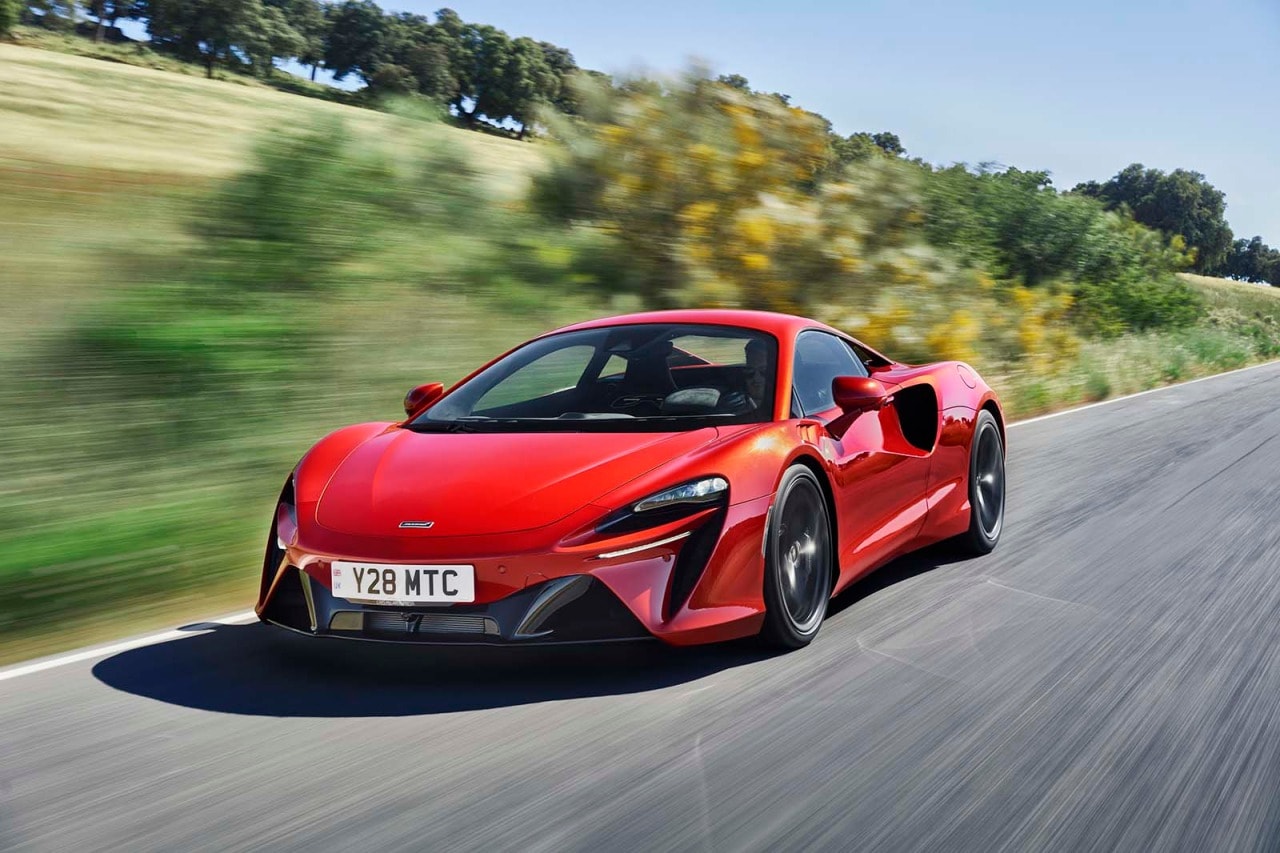





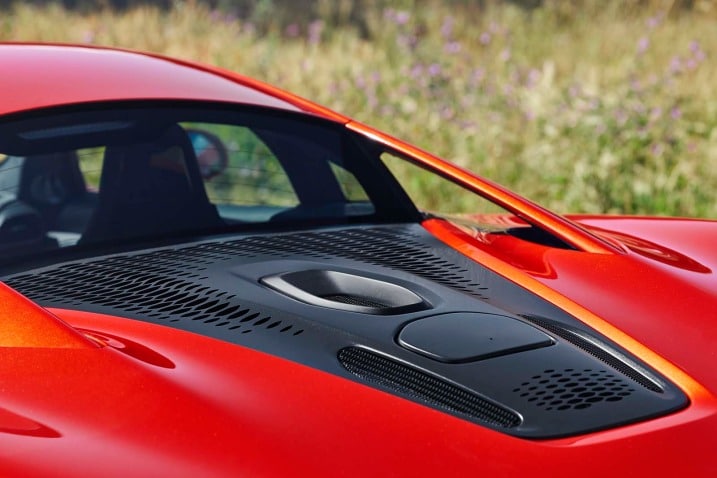

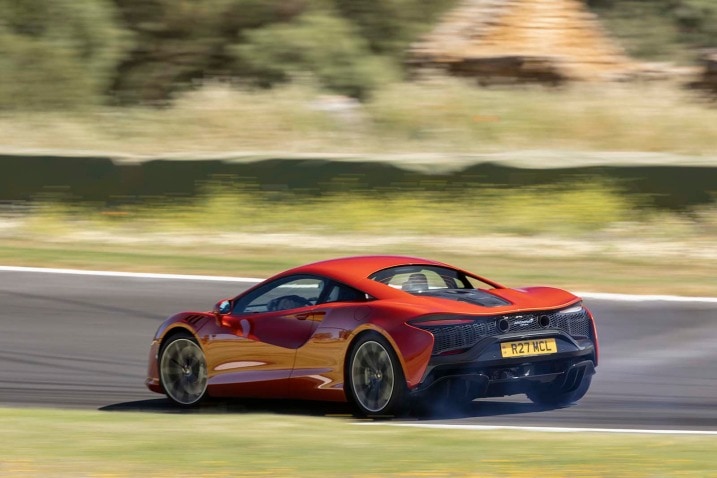
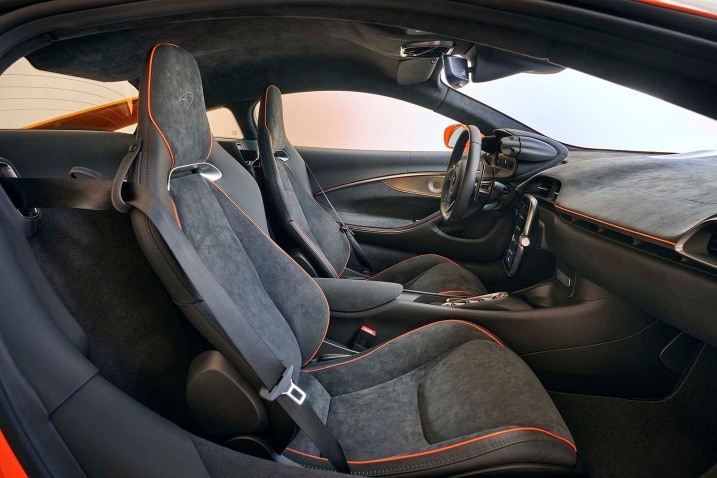
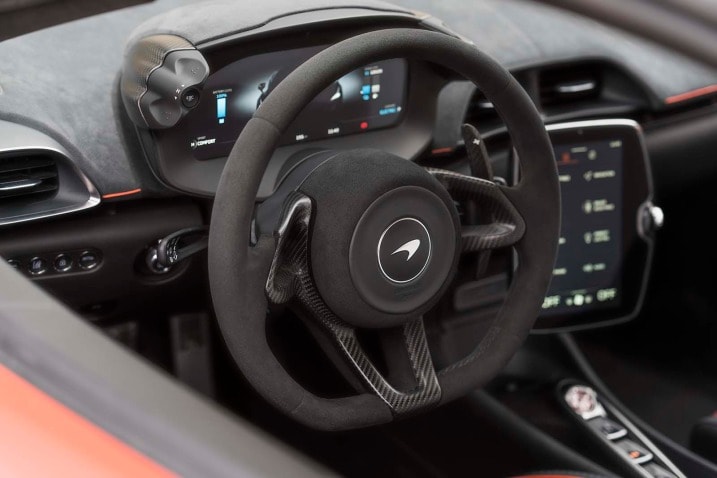

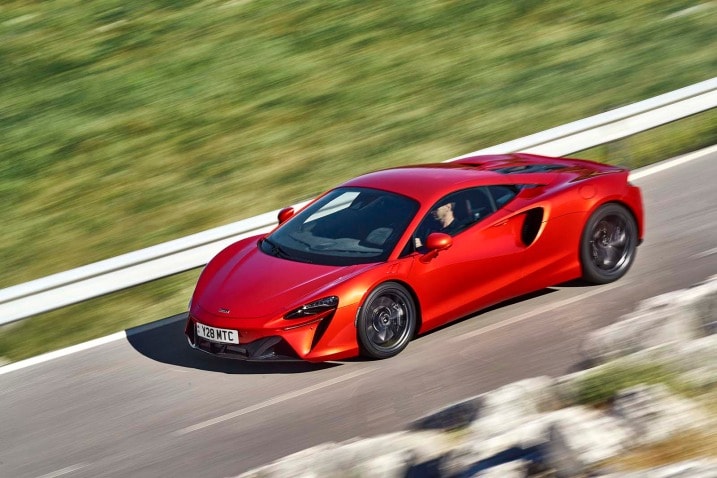
 by
by